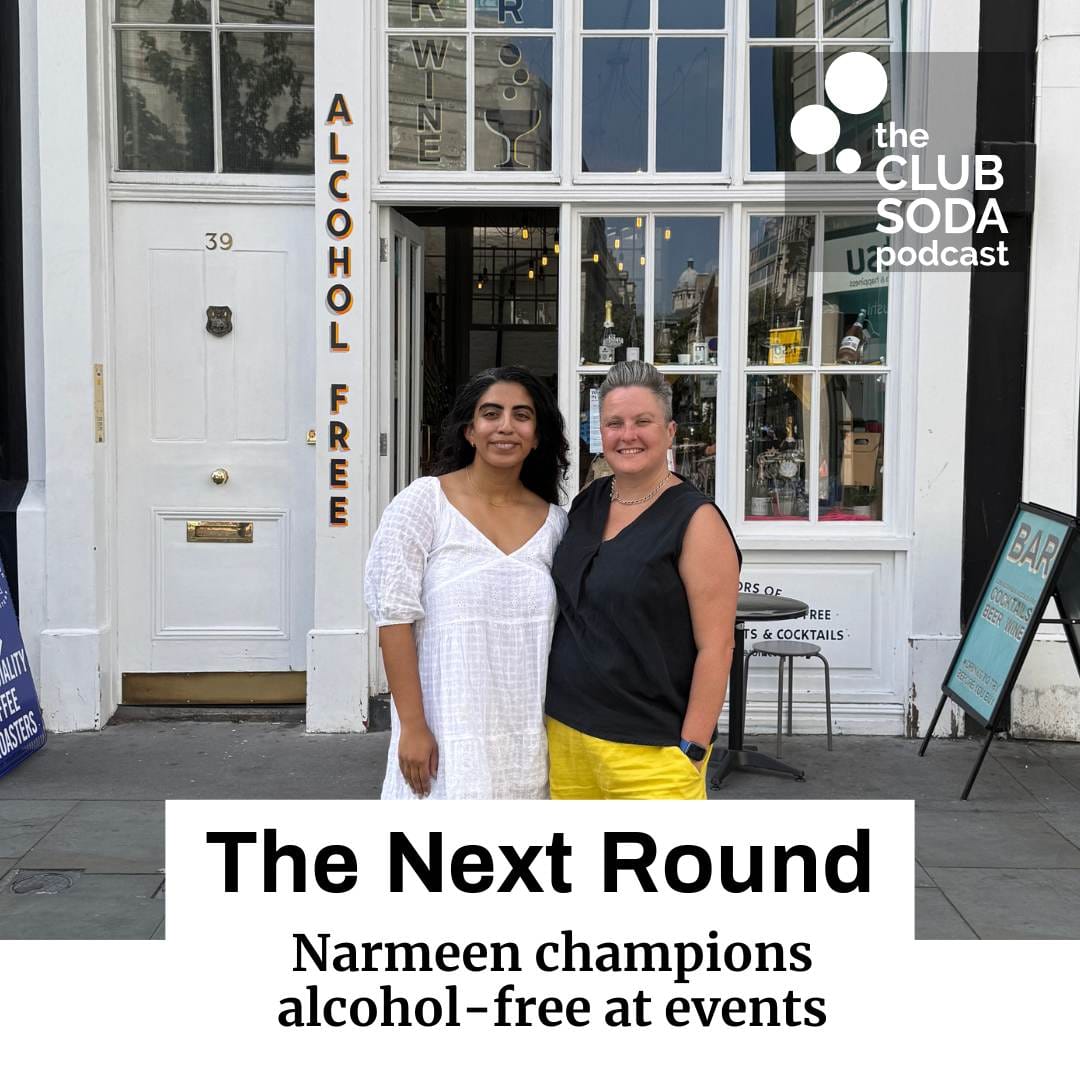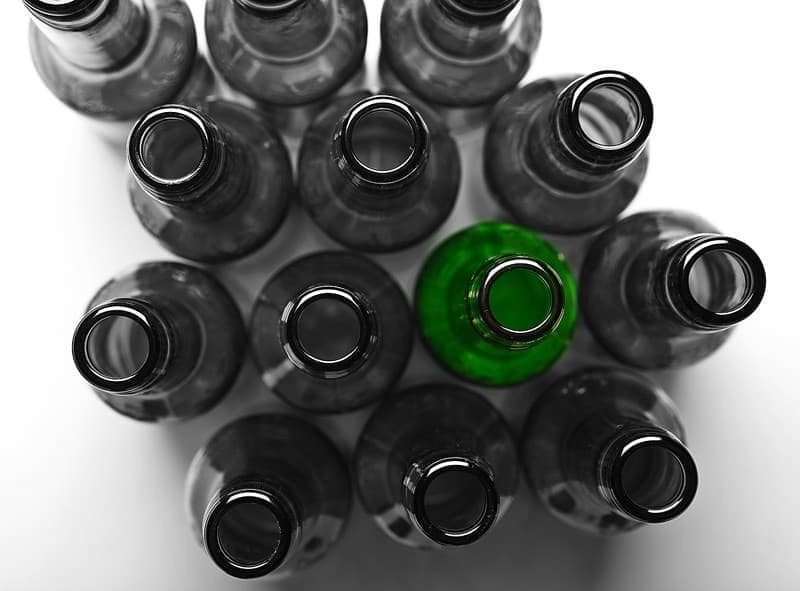
This website uses cookies to improve your experience. We'll assume you're ok with this, but you can opt-out if you wish. Read More
The Next Round: What happens after you change your drinking?

Today’s guest blog is from Winerist, wine experts who are more than qualified to see you through the wilderness of de-alcoholised wine.
As we step into October, we cannot forget it’s the time of the Go Sober for October campaign, annually organised by Macmillan Cancer Support, whereby you are challenged to not drink alcohol for 31 days for a good cause. Plus it’s good to detox your body once in a while! So we started to think about all those wine lovers who would love to do a truly good and, well, not quite so easy deed of not having even a glass of wine, not even with meals for the whole month to support so needed cancer care.
There are many other reasons why people do not drink alcohol – religious, health, work-related, pregnancy or other personal reasons.
People who are used to wines and then try alcohol-free wines often complain that the latter do not have the same mouthfeel, taste or finish.
We decided to explore more and decided to try out some of the de-alcoholised wines available on the UK market and find out whether they are a good alternative to favourite reds, whites, roses and bubbly, as well as how they might pair with food.
But first things first. Here are some common questions people ask about de-alcoholised wines:
Yes, but because it’s below 0.5% it’s branded alcohol-free. This is considered as safe to drink for driving and for those trying to quit their alcohol intake.
No! But it is fermented grape juice, that goes through the process of wine. The alcohol is removed at the end (see below).
There are two main processes for making de-alcoholised wine: vacuum distillation and reverse osmosis. In both cases the process starts with an alcholic wine, fermented grape juice and has the same stages of maturation, with alcohol being extracted after that.
Vacuum Distillation
Alcohol is gently extracted in a vacuum at temperatures below 30C, when the wine is warmed up and alcohol starts to evaporate slowly. This method is quick, and though it does not boil the wine, many people complain that the main phenolic components that give the wine its floral aroma gets lost or evaporates in this process.
Reverse Osmosis
Reverse osmosis filters out the aroma and phenolic components before the alcohol is removed by distillation. The remaining water is added back into the filtered wine afterwards. Reverse osmosis is a more expensive process than vacuum distillation and takes longer.
You can store them for up to 3 years but they are generally wines for current consumption.
Sadly they don’t, but there is hope, see our reviews below! De-alcoholised wines tend to taste more sweet, because of the residual sugar left is not fermented till the end. Also, the aromas are weaker because they need the alcohol to integrate and develop.
Winerist tasted seven de-alcoholised wines and we give you our tasting notes below in order of our preference:
This one was by far our favourite, especially as it’s harder to find a good alcohol free red than white. It’s partly due to it’s mouthfeel, helped by the ageing of the wine for 12 months in American oak. It’s deep ruby in colour, with medium plus flavour intensity of blackberry, blueberry, a bit jammy, simple but distinct oak notes, hints of cedar, coffee and liquorice.
On the palate it’s dry with medium acidity, medium body tannin, black fruit and sweet spice (nutmeg, cinnamon). The finish is intense and long.
Price: £9.99
Overall: 4*
Food pairing: steak, veal, slightly spicy dishes.
Where to buy: Alcoholfree.co.uk
Pale lemon in colour. On the nose it’s clean with medium intensity, aromas of lemon and hints of stone fruit. On the palate it’s off-dry with medium plus acidity, medium minus body and low intensity. It’s not a typical Chardonnay as the creaminess from the oak is missing.
Price: £4.99
Overall: 3*
Food pairing: roast chicken, salads.
Where to buy: Alcoholfree.co.uk
Interesting one. This is made from French grapes – a Bordeaux: 40% Sauvignon Blanc, 10% Semillon, 10% Merlot and 10% Cabernet Sauvignon. Because de-alcoholised wine is not protected by geographical identification it’s allowed to make wine in Germany using French grapes and by blending white and red grapes together to make a rose.
Pale salmon in colour. On the nose it’s clean with medium intensity and aromas of red apple, raspberry and strawberry. On the palate it’s dry with high acidity and the red fruit are more intense than on the nose!
Price: £5.49
Overall: 3*
Food pairing: on its own or with light salads or charcuterie
Where to buy: Alcoholfree.co.uk
The grape blend in this is unknown but there is a chance there could be Chardonnay and other white grapes like Muscat. Clear, pale lemon in colour with decent bubbles. On the nose it’s delicate, youthful, with lemon and fresh apricot aromas. On the palate it’s medium dry with medium acidity, and tastes more of grapes and lychees with delicate moussey finish.
Price: £5.99
Overall: 2.5*
Food pairing: desserts and cheese
Where to buy: Alcoholfree.co.uk
Unclear on the grape blend here. It’s pale lemon in colour, with a clean, citrus and herbal (sage) nose. Dry, high acidity, medium body, with flavours of green apples, gooseberry and an unpleasant sour yeasty finish.
Price: £4.99
Overall: 2*
Food pairing: dishes with creamy sauces, white not oily fish
Where to buy: Alcoholfree.co.uk
Pale lemon in colour, unknown grapes. On the nose it’s clean, with medium minus intensity, youthful light petillance, simple aromas of green apple, lemon, pear, some floral notes.
On the palate it’s off-dry, medium minus acidity, light body, with simple green apple and lemon flavours.
Price: £2.50
Overall: 1*
Food pairing: pasta dishes, salads
Where to buy: Sainsbury’s
It is a 100% Merlot from Germany! It’s pale purple to ruby in colour. On the nose: simple with thin sour cherry and plum undertones and low intensity. On the palate it’s dry with medium acidity, light body, low tannin and a little bit of bitterness.
Price: £6.99
Overall: 1*
Food pairing: beef casserole, dishes with minced meat and tomato sauce
Where to buy: Alcoholfree.co.uk
Overall, we should admit that although these wines should taste similar to ordinary alcoholic wines, they really do not. They are much simpler and somehow flatter. Tannins are not so well-integrated and acidity and sugars dominate. If you are looking for that wine mouthfeel then you are probably safe with an oak-aged red or Chardonnay (alcohol-free of course). Or if you are looking to have de-alcoholised wine with food they could actually prove an interesting match, better than sugary drinks. After all, de-alcoholised wine is probably like a soya chocolate bar – a great idea, but not quite leaves you satisfied.
This website uses cookies to improve your experience. We'll assume you're ok with this, but you can opt-out if you wish. Read More
| Name | Domain | Purpose | Expiry | Type |
|---|---|---|---|---|
| wpl_user_preference | joinclubsoda.com | WP GDPR Cookie Consent Preferences. | 1 year | HTTP |
| PHPSESSID | www.tickettailor.com | PHP generic session cookie. | 55 years | HTTP |
| AWSALB | www.tickettailor.com | Amazon Web Services Load Balancer cookie. | 7 days | HTTP |
| YSC | youtube.com | YouTube session cookie. | 55 years | HTTP |
| Name | Domain | Purpose | Expiry | Type |
|---|---|---|---|---|
| VISITOR_INFO1_LIVE | youtube.com | YouTube cookie. | 6 months | HTTP |
| Name | Domain | Purpose | Expiry | Type |
|---|---|---|---|---|
| _ga | joinclubsoda.com | Google Universal Analytics long-time unique user tracking identifier. | 2 years | HTTP |
| sbjs_migrations | joinclubsoda.com | Sourcebuster tracking cookie | 55 years | HTTP |
| sbjs_current_add | joinclubsoda.com | Sourcebuster tracking cookie | 55 years | HTTP |
| sbjs_first_add | joinclubsoda.com | Sourcebuster tracking cookie | 55 years | HTTP |
| sbjs_current | joinclubsoda.com | Sourcebuster tracking cookie | 55 years | HTTP |
| sbjs_first | joinclubsoda.com | Sourcebuster tracking cookie | 55 years | HTTP |
| sbjs_udata | joinclubsoda.com | Sourcebuster tracking cookie | 55 years | HTTP |
| sbjs_session | joinclubsoda.com | SourceBuster Tracking session | Session | HTTP |
| Name | Domain | Purpose | Expiry | Type |
|---|---|---|---|---|
| mailchimp_landing_site | joinclubsoda.com | Mailchimp functional cookie | 28 days | HTTP |
| __cf_bm | tickettailor.com | Generic CloudFlare functional cookie. | Session | HTTP |
| NID | google.com | Google unique id for preferences. | 6 months | HTTP |
| Name | Domain | Purpose | Expiry | Type |
|---|---|---|---|---|
| _ga_10XZMT03ZM | joinclubsoda.com | --- | 2 years | --- |
| AWSALBCORS | www.tickettailor.com | --- | 7 days | --- |
| cf_clearance | tickettailor.com | --- | 1 year | --- |
| VISITOR_PRIVACY_METADATA | youtube.com | --- | 6 months | --- |
Join Club Soda for 10% off your first order of drinks for UK delivery. Plus get our latest news and special offers for members to choose better drinks, change your drinking and connect with others.
If you get an error message with this form, you can also sign up at eepurl.com/dl5hPn